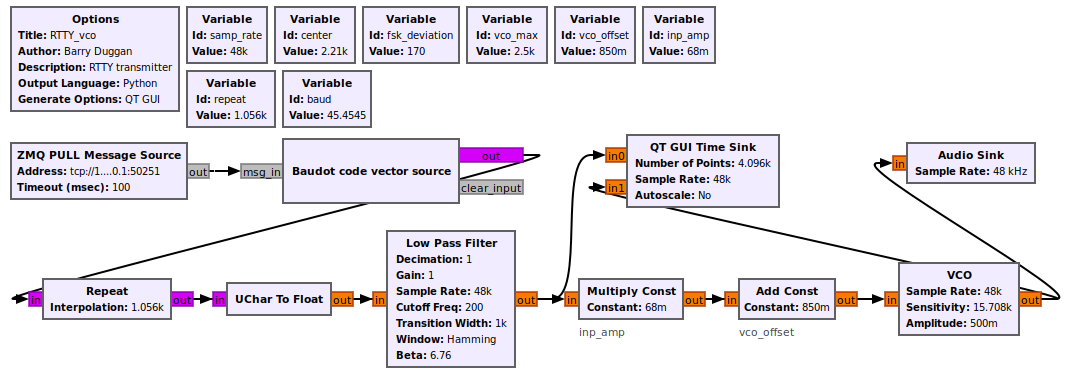VCO
Jump to navigation
Jump to search
VCO - Voltage controlled oscillator. Produces a sinusoid of frequency based on the amplitude of the input. See VCO (complex) for a complex sinusoidal output.
input: float stream of control voltages;
output: float oscillator output
Parameters
- Sample Rate
- sampling rate (Hz)
- Sensitivity
- units are radians/sec/volt
- Amplitude
- output amplitude
Example Flowgraph
This flowgraph can be found at [1]
For this flowgraph, the standard RTTY tones of 2295 (mark) and 2125 (space) are generated. The calculations for this follow:
- Choosing a full-scale frequency of 2500Hz with an input of +1, the VCO Sensitivity = (2 * Pi * 2500 / 1) = 15708
- The space frequency of 2125 is created by vco_offset = (2125 / 2500) = 0.850 volts
- The mark frequency of 2295 is created by a vector of (1 * 0.068) + 0.850 = 0.918 volts
See Sample_Rate_Tutorial#Sink_hardware_example for a discussion of the timing involved in a similar flowgraph.
Source Files
- C++ files
- TODO
- Header files
- TODO
- Public header files
- TODO
- Block definition
- TODO
